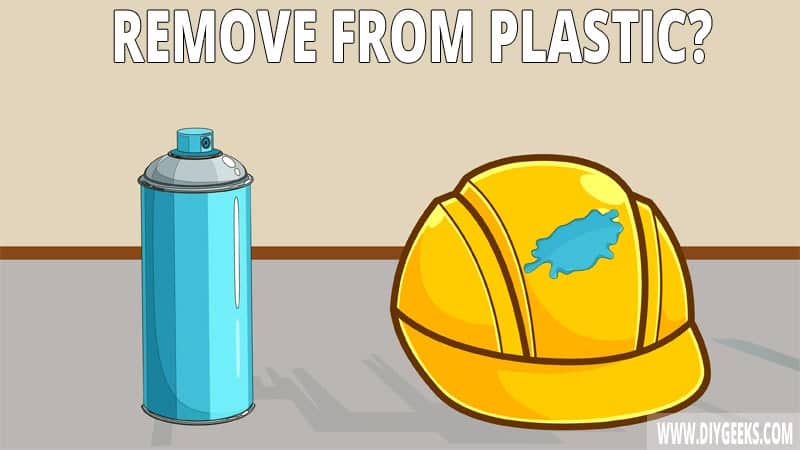While plastic is a non-porous surface that doesn’t absorb paint, spray paint is applied at a high speed (or pressure) and will adhere to it.
To remove spray paint from plastic, use dish soap or vinegar (for wet coatings) or use acetone or denatured alcohol (for dry coatings).
Can You Remove Spray Paint From Plastic Without Scratching It?
You can remove spray paint from plastic without scratching it by using solvent-based products. Solvent-based products will dissolve the particles and liquefy the spray paint, so you can wipe it off.
To avoid scratching the surface, don’t use paint removal methods that involve scrapping or sanding. Paint scrapers are sharp and will scratch a plastic surface. Sandpapers have a rough surface and will scratch a light material such as plastic.
How To Remove Wet Spray Paint from Plastic?
To remove wet spray paint from plastic, do the following things.
- Use Dish Soap.
- Use Vinegar.
- Use WD-40.
Note: The easiest way to remove spray paint is while the coating is still wet because the paint particles haven’t hardened yet, and the coating hasn’t bonded to the surface properly.
1. Use Dish Soap
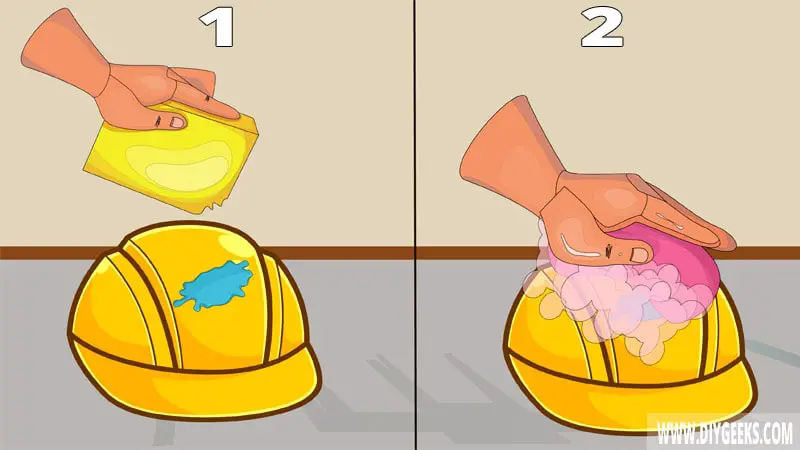
Wet spray paint is water-soluble, so you can dissolve and wash it off using a soap mixture. You can create a soap mixture by mixing soap (or detergent) with warm water. Avoid using bleach as a detergent, as it can etch or discolor the plastic.
Here are the tools you need:
- Dish soap or detergent
- A bucket of warm water
- Rags
- A sponge
- Baking soda
Here is a guide for this method:
- Sprinkle baking soda powder over the wet paint to absorb it.
- Mix detergent (or soap) with a bucket of warm water.
- Apply the soap mixture over the affected spot.
- Use a sponge or soft brush to scrub the paint off.
- Rinse the plastic surface with warm water to remove the soap residue.
- Allow the surface to dry.
2. Use Vinegar
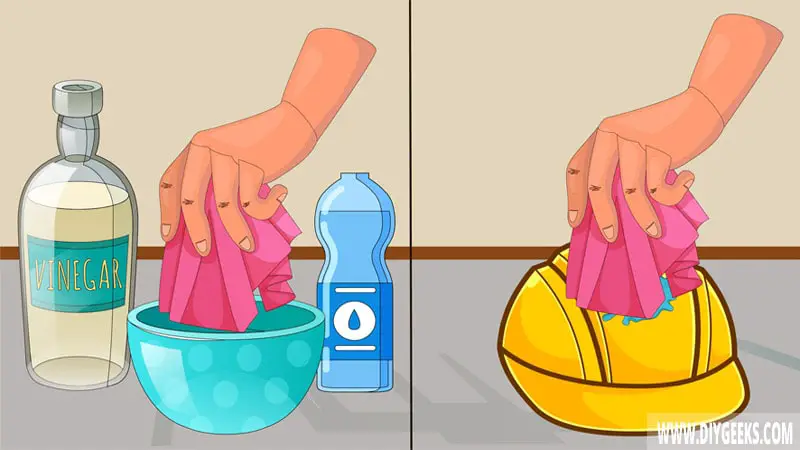
Mix vinegar powder with warm water and use the mixture to wash the plastic. Don’t use more than a teaspoon of vinegar in the mixture, as it can damage the surface.
Here are the tools you need:
- Powder vinegar
- A bowl of warm water
- A soft scrubbing brush
- Rags
Here is a guide for this method:
- Use a rag to wipe off as much wet paint as possible.
- Mix vinegar powder with warm water (half a teaspoon of vinegar in a gallon of water).
- Apply the mixture over the affected spots.
- Use a scrubbing brush to scrub the surface and paint.
- Wipe the surface with clean water.
- Allow the surface to dry.
3. Use WD-40
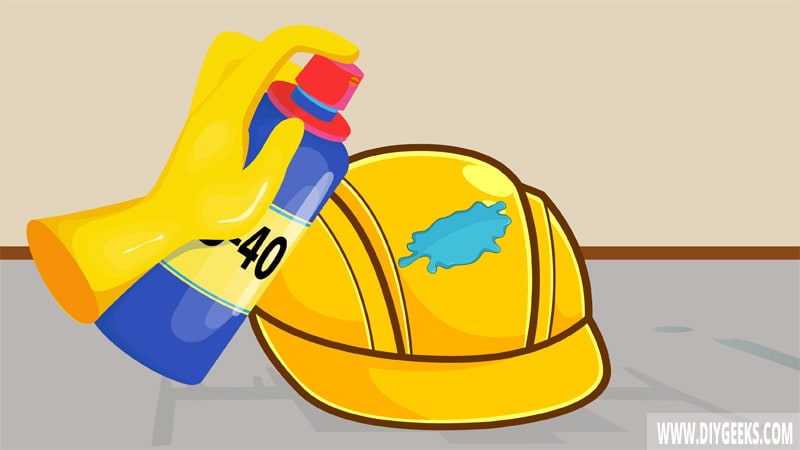
WD-40 is a solvent-based cleaner and lubricant that can remove wet spray paint. To do so, spray and apply the WD-40 over the affected spot, wait a few minutes, and use a microfiber cloth to scrub the area.
How To Remove Dried Spray Paint From Plastic?
To remove dried spray paint from plastic, do the following things.
- Use Acetone.
- Use Denatured Alcohol.
- Use a Paint Stripper.
Dried spray paint is harder to remove because the paint particles have hardened and compacted, the solvent has evaporated, and the coating is hard and rigid.
When the paint particles are compact, they repel (or prevent) water from penetrating its coating. So, it becomes harder for solvents (or cleaning products) to dissolve the coating.
To do this, you need a solvent-based product strong enough to penetrate and dissolve the coating.
1. Use Acetone
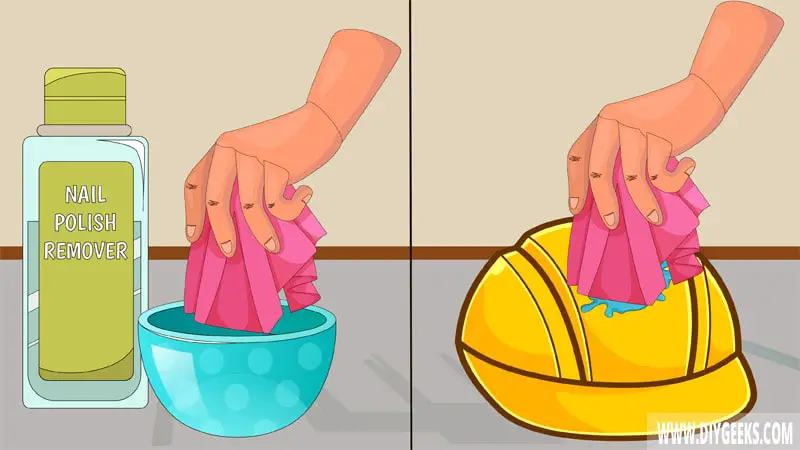
Acetone is an alcohol-based solvent that can penetrate and remove dried spray paint.
For this method, you’ll need these tools and supplies:
- A bottle of acetone
- Rags
- A soft sponge
- A bowl of water
Here is a guide for this method:
- Wipe the surface to remove dust or dirt.
- Pour acetone into a clean container.
- Soak a rag into acetone for a few minutes.
- Use the dampened rag to wipe the affected spots.
- Wait 30 minutes.
- Use a soft sponge to scrub the surface lightly.
- Remove acetone residue using soapy water, as it can discolor the material.
- Rinse the plastic and leave it to dry.
2. Use Denatured Alcohol
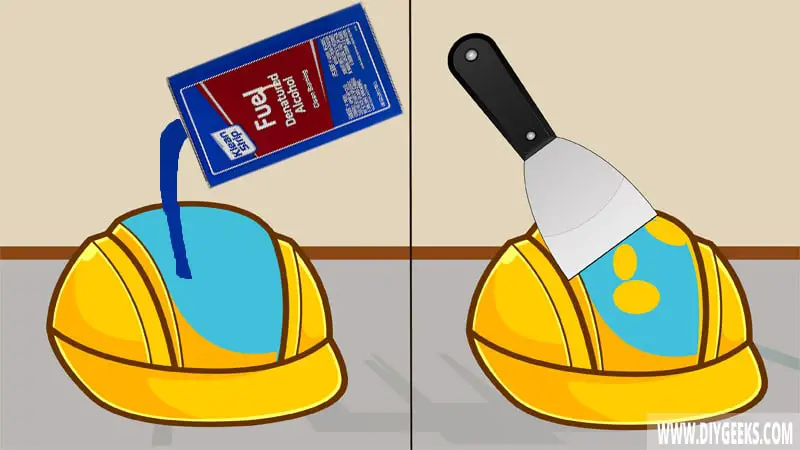
Denatured alcohol is an alcohol-based solvent that can dissolve the bonding between paint particles. Alcohol is a natural paint-remover and won’t damage a plastic surface. However, this method works best for small stains or splatters, don’t use it to remove multiple paint coatings.
Here are the tools you need:
- A bottle of denatured alcohol
- Rags
- Warm water
- A plastic putty knife
- A toothbrush
Here is a guide for this method:
- Pour denatured alcohol directly into the affected spots.
- Wait 30 minutes for the solvent to dissolve the particles.
- Use a plastic putty knife the scrape the loose spray paint.
- Use a toothbrush to remove the leftover spray paint.
- Rinse the surface with warm soapy water.
- Allow it to dry.
3. Use a Paint Stripper
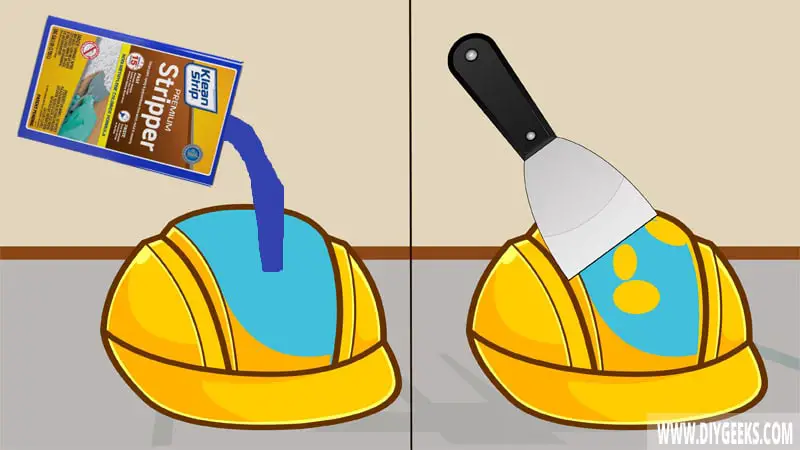
Paint strippers are solvent or chemical-based removers that dissolve and remove multiple coats of wet or dried spray paint. This product costs more than other products but is the most effective. However, only use water-based stripping compounds as they are lighter and won’t damage a plastic surface.
Here are the tools you need:
- A paint stripper
- A plastic putty knife
- A paintbrush
- A pair of gloves
- Mineral spirits
Here is a guide for this method:
- Wipe the surface to remove dust. Dust can prevent the stripping compound from working properly.
- Apply a thick coat of stripping compound over the affected spot using a paint scraper.
- Wait 15 minutes.
- When the stripping compound is dry, scrape it with a plastic scraper. The spray paint will come off too.
- Wipe the plastic surface with mineral spirits or natural oil.
- Clean the surface with soapy water.
- Leave it to dry.
